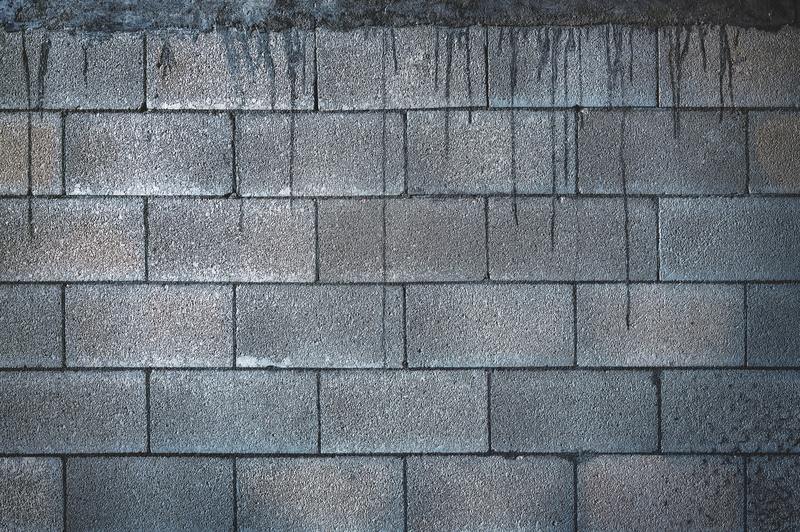Using a mixture of soap and water is the best way how to clean water damaged concrete masonry unit walls. You should use a bristle brush to scrub the wall so the stains will come off. Several people love using concrete masonry walls, so this trick is helpful especially in damp areas.

Why Should You Choose Concrete Masonry Walls?
Concrete masonry unit walls are made of various cement and aggregates. It’s a popular construction material because it gives the best value for money.
- It’s durable – This material won’t dent easily, so it’s an excellent choice for outdoor walls.
- It’s cost-efficient – Since concrete masonry is durable, you won’t have to spend so much on repairs. It’s also resistant to fires, severe weather, and even break-ins, so you won’t have to pay so much on various insurance policies.
- Fire and sound resistant – Concrete masonry walls won’t burn, so they make excellent fire barriers. You will have significantly less damage if any accidents happen in your building.
This material is also rigid, so it can reduce unwanted noise transmission from outside. You will enjoy more peace in a concrete masonry building.
- It’s properly insulated – This wall can insulate you from the outside heat and maintain a comfortable temperature indoors.
- It’s better for the environment – Concrete masonry doesn’t emit any volatile organic compounds, so it keeps the surrounding air clean.
Types Of Water Damage On Concrete Walls
Masonry concrete is a sturdy material, but it isn’t immune to forms of water damage. Moisture, leaks, and flooding can leave marks on your wall that you should remedy.
Seepage and condensation
Seepage is when water goes through the wall from the opposite side, while condensation is water that collects on the wall due to a moist interior.
Leaks and damp surroundings can lead to these problems, and they must be treated immediately to prevent mold growth.
Efflorescence
Have you ever seen a scaly white film on your concrete wall? That’s efflorescence, the buildup of salts on the wall surface from evaporated water. Basements usually face this problem as they are generally cool and damp.
Surface and structural damage
Water damage can affect the building surface, causing cracking and peeling paint. Moisture can also damage the building structure leading to cracked mortar joints and shifting blocks.
.It’s essential to recognize signs of water damage so you can apply the proper treatment. If the damage is too severe, remember to contact professionals.
Step-By-Step Process On How To Clean Water Damaged Concrete Masonry Unit Walls
If your building has a basement, then you’re pretty familiar with efflorescence. These stains can be a recurring problem; luckily, the solution is simple and requires minimal materials.
Step #1. Prepare your materials
All you will need for cleaning is warm water, a sponge, liquid dish soap, a bristle brush, a clean cloth, goggles, and an electric fan. If you don’t have a bristle brush, a regular paint brush works just fine.
Step #2. Make the soap mixture
Five gallons of warm water will do; put it in a bucket and add a few drops of liquid dish soap. Mix the solution with your brush.
Step #3. Scrub the wall
Scrub the wall with the brush which you dipped in the solution. Make sure to remove as much efflorescence as possible. The stains will make your water dirty, so replenish the bucket after scrubbing a large area.
Step #4. Rinse the wall
When you have removed all the stains, rinse the wall with plain water. Dip a clean cloth in water and apply it to your wall.
Step #5. Dry the wall with fans
This is an essential part of the cleaning process. If you wait for too long, your wall will absorb water again.
Make the fan face your wall and leave it to dry. This method is best for interior walls; you can just let it air and sundry if you clean an exterior wall.
Now your wall is back to normal! Always check if the efflorescence is growing again so you can repeat the process.
Will Insurance Cover The Water Damage Costs?
A concrete masonry wall can have several types of water damage, and not all of them are as easy to fix as efflorescence. Sometimes, you will have to spend so much money on repairs, especially for the basement area.
So, can your home insurance help you with these expenses? Every policy has different insurance coverage, so it’s always best to consult the details with your provider.
The good news is, most internal basement leaks fall under your insurance coverage! You need to determine the source of your water damage to coordinate with your provider.
Some internal sources usually covered by home insurance are:
- Broken appliances
- Burst pipes
- Leaking water heater
- Overflowing sink or tub
For external sources, you need to be more careful. Most policies don’t cover external water damage sources, even for floods.
Some external sources not covered by home insurance include:
- Sewage overflow
- Flood damage
- Groundwater damage
You will need to get a separate policy for floods that you should study thoroughly. Just remember that every insurance company may have its particular services. Consult with your lawyer if you need help communicating with your agent.
Conclusion
Concrete walls are ideal for any building, but they can still suffer from moisture, especially efflorescence. You can keep your structure clean and beautiful when you know how to clean water damaged concrete masonry unit walls. This skill will help you keep your walls in the best condition.
